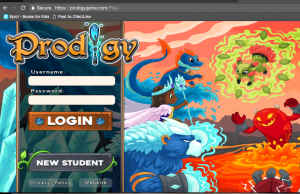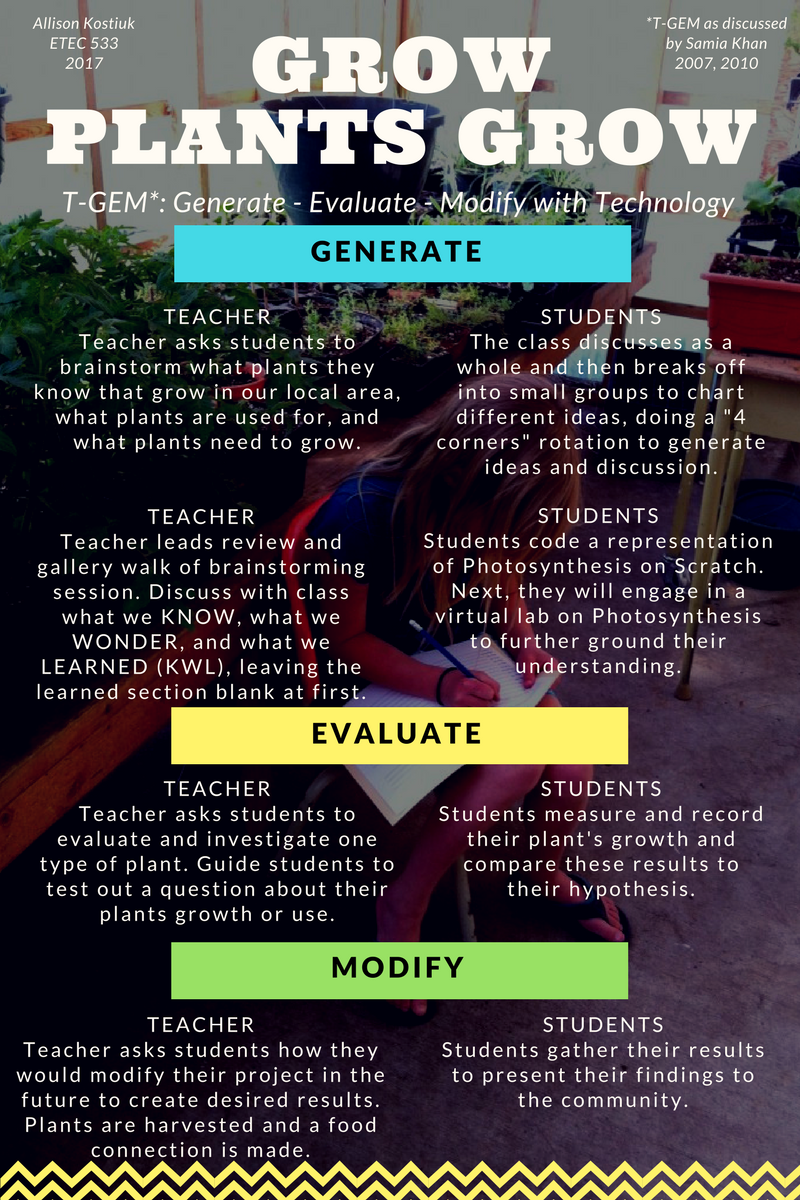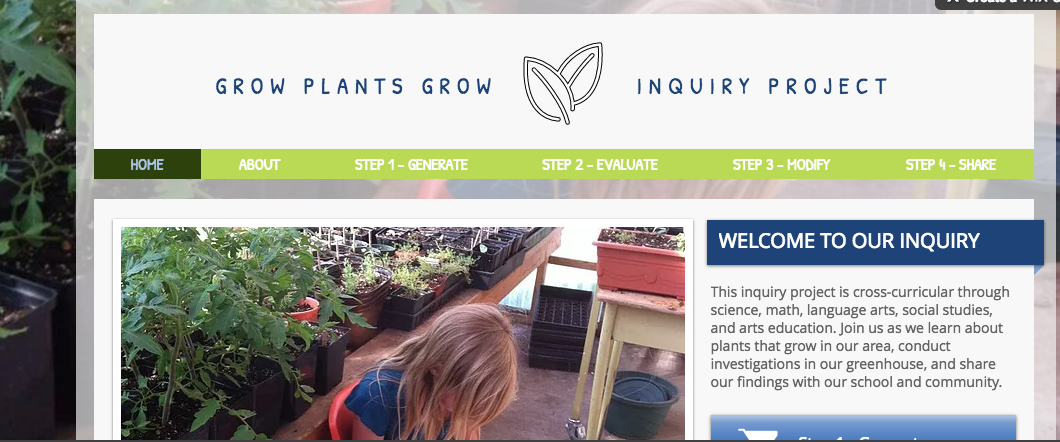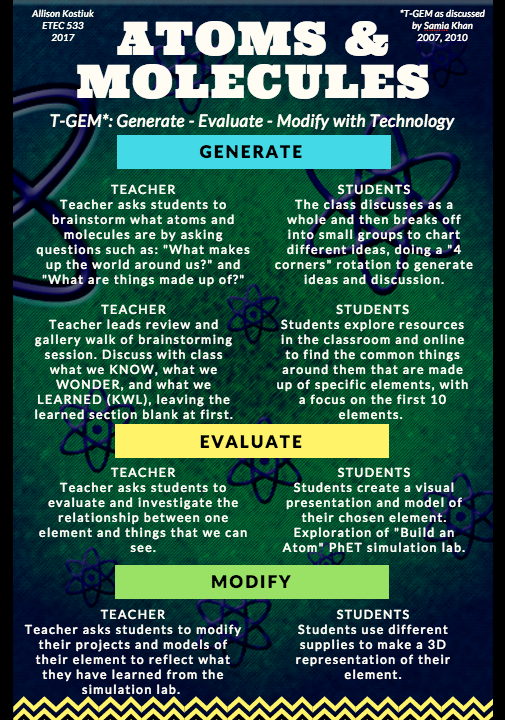To show a synthesis of my learning from Module B, I chose to create a Wordle inspired by my most influential readings from each week. I chose to take keywords from the abstracts of these articles: Pellegrino & Brophy (2008), Kim & Hannafin (2011), Edelson (2001), and Khan (2010).

Although some words I was tempted to hyphenate (such as ‘problem solving’) so that they would appear together, I decided to write the words in as they were and see what happened. I chose this particular font because it reminded me of old foundational stone that was used to create many of the world’s oldest buildings. To me, this represents that although the newness of colour and word clouds may seem flashy, the ideas are set in foundations of research, experimentation, and experience. I found it particularly interesting that design was one of the most popular words amongst the four articles.
The impact on my teaching that the exploration of these learning theories is already evident. As I mentioned in an earlier post after exploring Anchored Instruction (Pellegrino & Brophy, 2008), I decided to create some real-world math problems incorporating my grade 3 students to “help them conceptualize environments where problems tend to reoccur and it becomes useful to invent ways to deal with these reoccurances” (p. 283). I try to allow some choice within the problem:
Today’s problem: Payton has $___ to spend at La Lune Candy Shoppe. If he buys 5 _____ for $0.50 each, how much money will he need? How much money will he have left after he buys them?
In addition to the problem, I provide a photo of the student displayed on the Smart Board that shows them acting out the problem. I allow students to work within their desk pods and have only stepped in to guide the presenting of answers in sentences and to review mathematical concepts (i.e. regrouping with addition and subtraction).
Whereas anchored instruction is all about situating learning in our learner’s environment, scaffolding (Kim & Hannafin, 2011) consists of staging achievable steps that are within reach but just slightly out of the comfort zone that are appropriate for the individual learner. Taking my math problems, it may be necessary for me to intervene and guide more with some students than others. Another idea could be to extend the same problem for advanced students.
Learning-for-Use (Edelson, 2001) integrates the above but focusses on retrieval. This is where my math problems come into play because they are taking math concepts we have explored already this year and calling upon the retrieval of these concepts. By showing students. Designing and interweaving “well-defined, guided investigation activities” (p. 362) throughout my math instruction will help to embed these concepts for many students.
T-GEM (Khan, 2010) is where I feel that I can bring this in altogether. Now that we have done a few weeks of these problems, I am having students generate ideas for their own math problem. Together, we are going to evaluate the problem they would like to create and that it is solvable. Students will be required to create an answer key for their problem and evaluate whether they have a one-step, two-step, or three-step problem. After peer and teacher review, students can modify their problem to make sense for the class and capture a photo, utilizing technology, that showcases their problem and the people in it. Finally, inspired by a project that students described in one of the videos we watched in Module A, this project will be compiled into a class book and sent home for “homework” over spring break. Trust me, grade 3’s get VERY excited about homework at this stage :).
It has been very engaging for myself and my students to see this evolving project emerge in our classroom. I look forward to completing it with my students and appreciate the synthesis of my learning throughout this module that has emerged.
Edelson, D.C. (2001). Learning-for-use: A framework for the design of technology-supported inquiry activities. Journal of Research in Science Teaching,38(3), 355-385.
Khan, S. (2010). New pedagogies for teaching with computer simulations. Journal of Science Education and Technology, 20(3), 215-232.
Kim, M. C., & Hannafin, M. J. (2011). Scaffolding problem solving in technology-enhanced learning environments (TELEs): Bridging research and theory with practice. Computers & Education, 56(2), 403-417.
Pellegrino, J.W. & Brophy, S. (2008). From cognitive theory to instructional practice: Technology and the evolution of anchored instruction. In Ifenthaler, Pirney-Dunner, & J.M. Spector (Eds.) Understanding models for learning and instruction, New York: Springer Science + Business Media, pp. 277-303.




